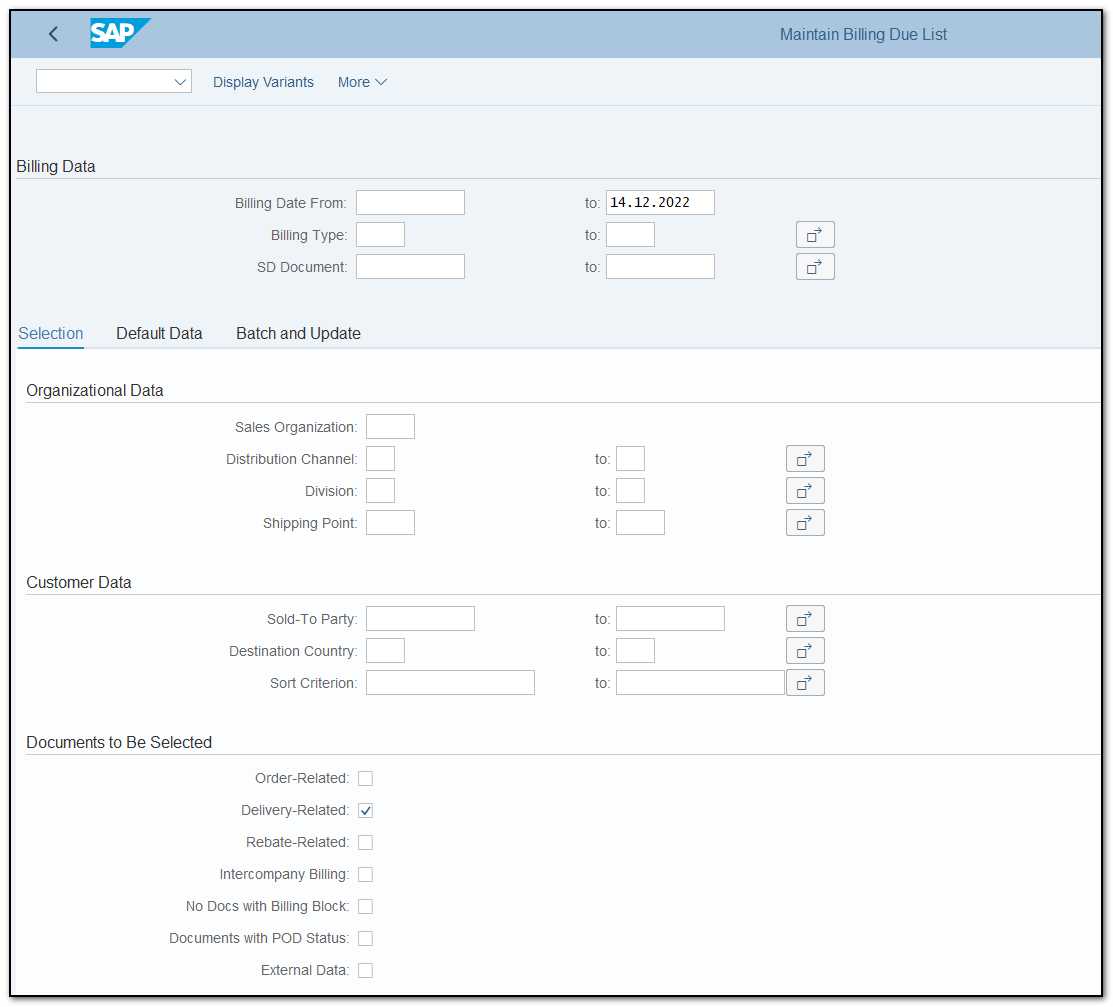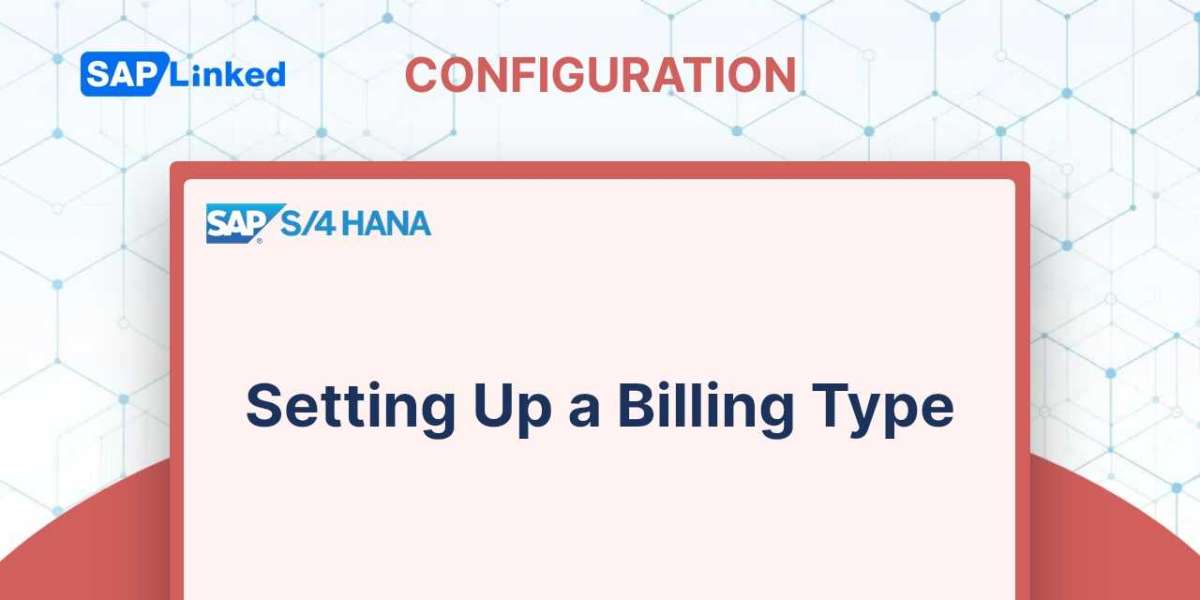A billing document can be prepared in SAP either individually or in batch by conducting recurring processes. The methods for producing a billing document are covered in the following sections.
Creating an Individual Billing Document
The menu navigation is as follows to access this transaction:
SAP Menu ➢ Logistics ➢ Sales And Distribution ➢ Billing ➢ Billing Document ➢ Create (VF01)
Enter one or more documents required for invoicing on the screen that appears, which is depicted in Figure 1. These could be delivery documents or sales documents (in the case of order-related billing and credit/debit memos). Depending on the customization settings, the charging type can either be explicitly entered or decided upon automatically. A billing document is created by the Execute function.

Figure 1 Creating a billing document using VF01
Creating Individual Billing Document from the Sales Order Screen (VA01 or VA02)
In the case of order-related invoicing, you can utilize the option Sales ➢ Document Billing from the sales order screen to create a billing document.
If the user has permission to create sales orders and billing documents, this option is available.
Collective Processing of Documents Due for Billing
Individual billing documents may not always be possible to prepare when there is a significant frequency of sales transactions. You can generate documents in batches by processing billing documents together. The menu path is:
SAP Menu ➢ Logistics ➢ Sales And Distribution ➢ Billing ➢ Billing Document ➢ Process Billing Due List (VF04)
You can choose the criteria for which the list can be executed using the selection screen. Figure 2 illustrates how you might use criteria like billing data, organizational data, and/or customer-specific data. Billing data includes options for billing type and billing dates (such as the sold-to party number). By selecting scenarios like order-related billing, delivery-related billing, and other options, you may further restrict the documents that are available for selection.

Figure 2 Billings-due list



